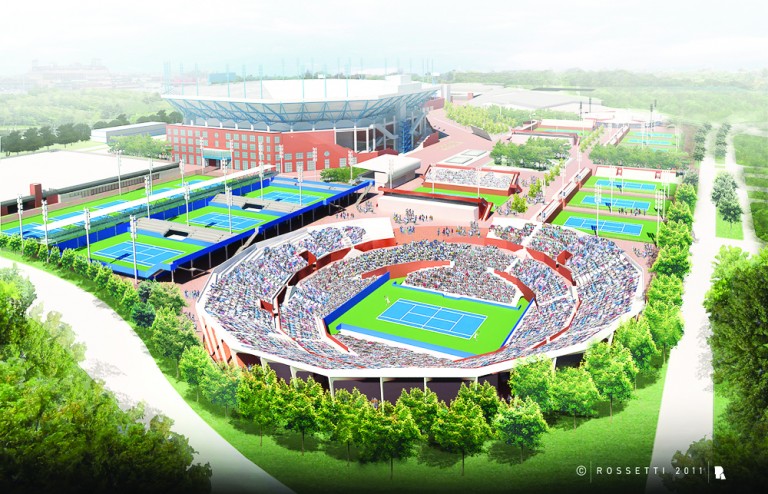Following a year of contentious debate over the United States Tennis Association’s proposal to expand its complex in Flushing Meadows Corona Park, the City Council last week approved the plan to replace two stadiums and add thousands of seats in exchange for ongoing funding for the park for years to come.

The City Council approved the USTA’s plan to expand its facility in Flushing Meadows Corona Park in exchange for ongoing funding for the borough’s largest public green space. File Photo
In a dramatic departure from what the USTA had originally said it would do, the organization agreed to, beginning in 2014, provide $10.05 million for Flushing Meadows Corona Park – including $5 million for capital projects, $350,000 a year for three years for maintenance and programming, and $200,000 a year for the next two decades. After the USTA agreed to the funding, which will help to create a public-private partnership that will aim to protect Flushing Meadows Corona Park, the Council voted 47-1 last Wednesday to permit the group to expand the National Tennis Center by adding 0.68 acres to the 42 acres it already owns. Councilman Dan Halloran (R-Whitestone) was the sole individual to vote no, saying his constituents were against further development in Flushing Meadows.
The USTA’s $500 million expansion plan includes tearing down two aging stadiums built for the 1964 World’s Fair and replacing them, as well as adding about 7,000 seats and more parking.
“This deal was a long time coming, and I can say with confidence that we will all benefit from this expansion,” said Councilwoman JulissaFerreras (D-East Elmhurst), who led negotiations with the USTA. “…This agreement puts both the USTA, Flushing Meadows Corona Park and the community on a solid foundation to grow and succeed for decades to come.”
In addition to the $10.05 million, the USTA – which runs the U.S. Open at Flushing Meadows – agreed to provide a series of other items, including quarterly presentations on events and available jobs at the National Tennis Center.
David Haggerty, president of the tennis association, said in a statement that the updates – and the project in general – would help “residents, visitors, and professional and recreational tennis players while also serving the U.S. Open Tennis Championships as a world renowned event.”
The USTA also agreed to provide bi-monthly newsletters for the community which also highlight upcoming events and job availabilities. The organization will run an annual “Queens Day,” Ferreras said, at which time – likely during the U.S. Open qualifying tournament – there will be a celebration that could include performances from Queens bands and opportunities for the public to participate in tennis-related games and activities.
As part of the agreement, the USTA will run an annual U.S. Open job fair exclusively for Queens residents, will hold auditions each year for U.S. Open anthem singers in Queens, and will allow the site to host school graduations.
The group will also distribute 5,000 complimentary tickets to the Arthur Ashe Kids Day Stadium Show, and it committed to allowing families to receive coaching from tennis pros for a nominal fee. Other upcoming programs the USTA agreed to include a summer movie screening series and adaptive tennis events that allow individuals with disabilities to play tennis at the site.
Area civic leaders praised the deal, saying it would help to protect the park for decades to come.
“An improved park will have a huge impact on the hundreds of thousands of families that depend on Flushing Meadows-Corona Park,” the Fairness Coalition of Queens – the umbrella organization for more than 20 civic groups from the borough – said in a prepared statement. “FMCP is the only green space for tens of thousands of middle- and low-income people. The one place where families can come together to play soccer, exercise, play, gather, and enjoy nature. The park is a vital community resource that must be preserved and protected from any further commercial development.”
By Anna Gustafson

